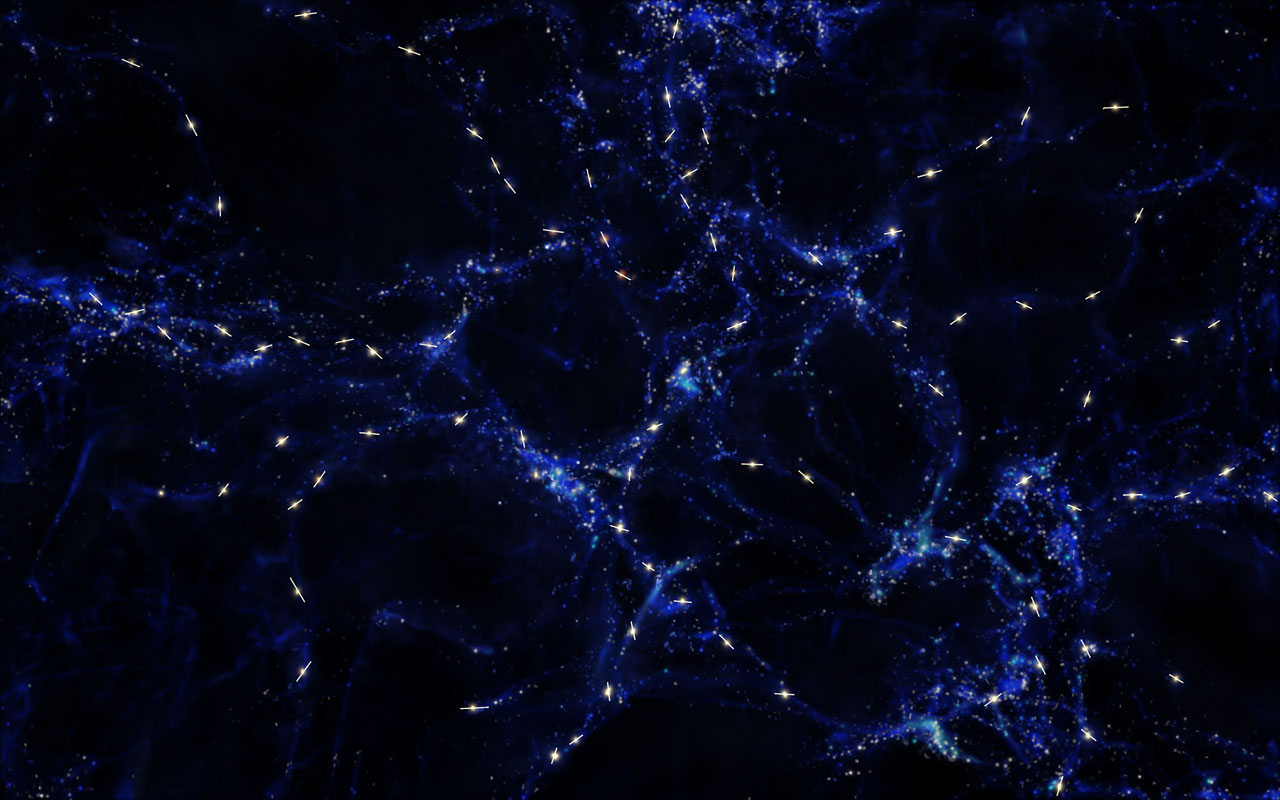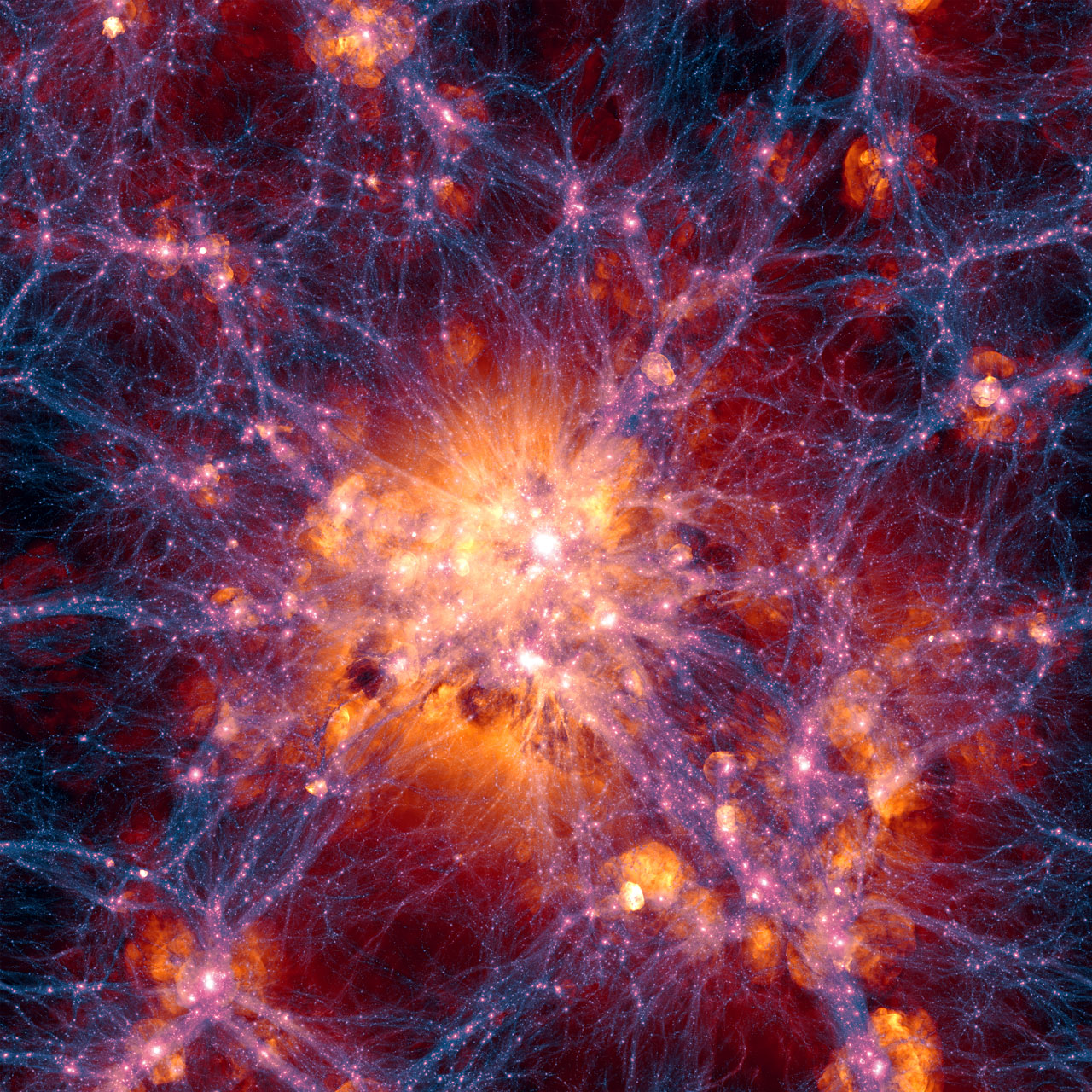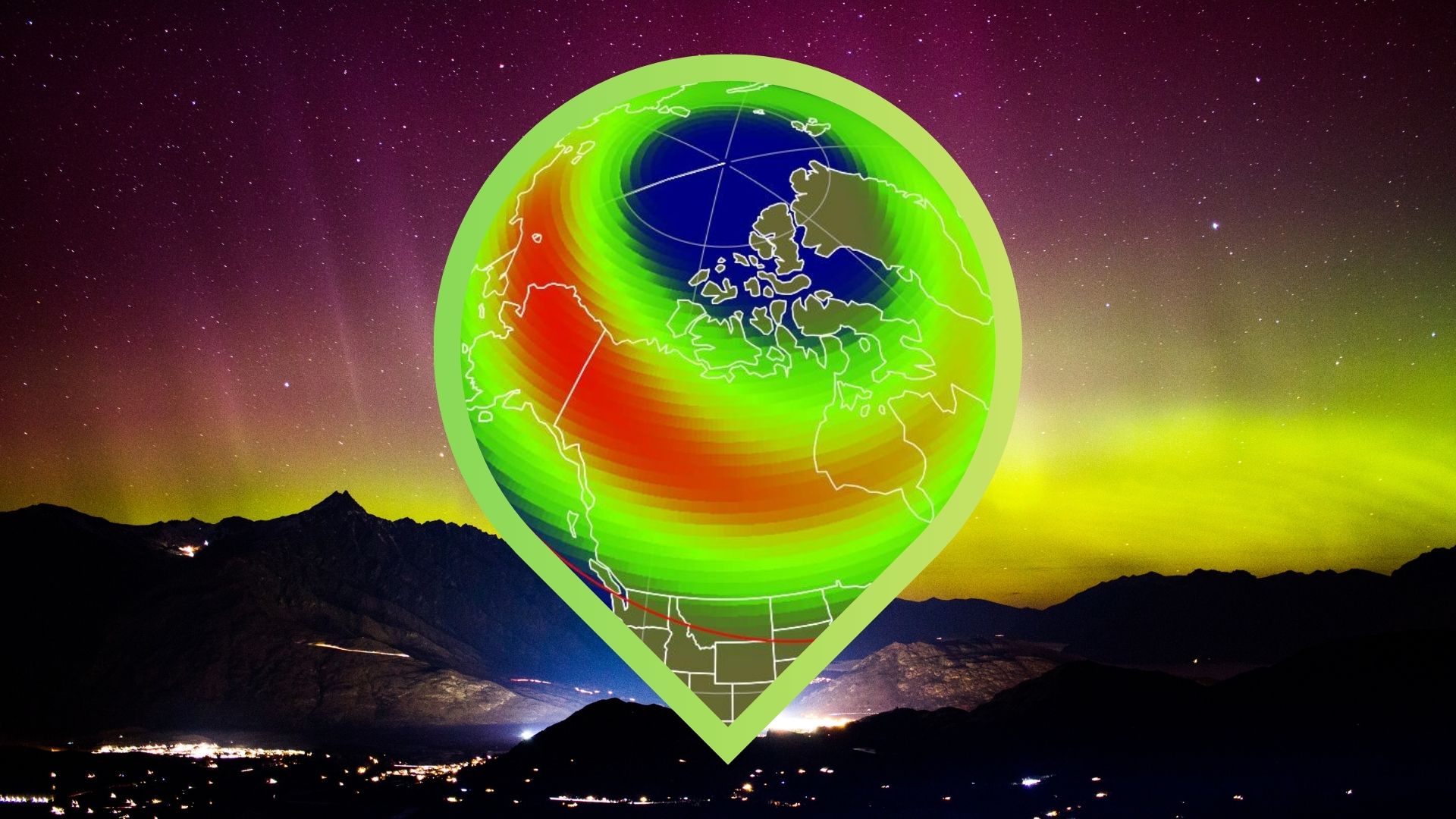Spooky Galaxy Web Reveals the Largest Structures in the Universe (Video)

A spooky new image shows a web of bright galaxies aligned in the largest structures ever discovered in the universe.
Scientists working with a telescope in Chile discovered the alignment by studying 93 quasars — objects that shine very brightly and are powered by supermassive black holes — from the early universe. The picture (an artist's impression created using data collected by the European Southern Observatory's Very Large Telescope) shows the quasars aligned in a web of blue against the black sea of space.
Earlier studies have found that these quasars are "known to form huge groupings spread over billions of light-years," European Southern Observatory (ESO) representatives said in a statement. The quasars studied by the research team formed when the universe was about 4.6 billion years old, about one-third of the age it is now, ESO added. [Biggest Structure in the Universe Explained (Infographic)]
"The first odd thing we noticed was that some of the quasars' rotation axes were aligned with each other — despite the fact that these quasars are separated by billions of light-years," study leader Damien Hutsemékers, from the University of Liège in Belgium, said in the same ESO statement.
Hutsemékers and his team also found that the quasars' rotation axes were linked to what is called the large-scale structure of the universe. Previous studies have shown that galaxies are not distributed evenly throughout the universe. Instead, the large star-filled objects clump together in a web, and this is the large-scale structure of the universe, according to ESO.
Scientists working with the Very Large Telescope found that the rotation of the quasars is parallel to the large-scale structures where the galaxies are found.
"The alignments in the new data, on scales even bigger than current predictions from simulations, may be a hint that there is a missing ingredient in our current models of the cosmos," team member Dominique Sluse of the Argelander-Institut für Astronomie in Bonn, Germany and University of Liège, said.
Breaking space news, the latest updates on rocket launches, skywatching events and more!
Team members said that the likelihood these results were created by chance is less than 1 percent, according to ESO. The new study is detailed in the Nov. 19 issue of the Journal Astronomy & Astrophysics.
The European Southern Observatory is a collaboration of 15 different countries including France, Brazil and Denmark. ESO is responsible for operating three observing sites in Chile at La Silla, Paranal and Chajnantor. The Very Large Telescope is based in Paranal.
Follow Miriam Kramer @mirikramer. Follow us @Spacedotcom, Facebook and Google+. Original article on Space.com.

Miriam Kramer joined Space.com as a Staff Writer in December 2012. Since then, she has floated in weightlessness on a zero-gravity flight, felt the pull of 4-Gs in a trainer aircraft and watched rockets soar into space from Florida and Virginia. She also served as Space.com's lead space entertainment reporter, and enjoys all aspects of space news, astronomy and commercial spaceflight. Miriam has also presented space stories during live interviews with Fox News and other TV and radio outlets. She originally hails from Knoxville, Tennessee where she and her family would take trips to dark spots on the outskirts of town to watch meteor showers every year. She loves to travel and one day hopes to see the northern lights in person. Miriam is currently a space reporter with Axios, writing the Axios Space newsletter. You can follow Miriam on Twitter.

